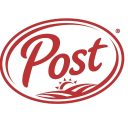/ factorpad.com / stocks / f41hkx.html
An ad-free and cookie-free website.
Our quantitative data points are meant to provide a high-level understanding of factors in equity risk models for Post Holdings Inc. Portfolio managers use these models to forecast risk, optimize portfolios and review performance.
We show how POST stock compares to 2,000+ US-based stocks, and to peers in the Manufacturing sector and Breakfast Cereal Manufacturing industry.
Please do not consider this data as investment advice. Data is downloaded from sources we deem reliable, but errors may occur.
 Post Holdings, Inc., headquartered in St. Louis, Missouri, is a consumer packaged goods holding company operating in the center-of-the-store, refrigerated, foodservice, food ingredient and convenient nutrition food categories. Through its Post Consumer Brands business, Post is a leader in the North American ready-to-eat cereal category offering a broad portfolio including recognized brands such as Honey Bunches of Oats®, Pebbles™, Great Grains® and Malt-O-Meal® bag cereal. Post also is a leader in the United Kingdom ready-to-eat cereal category with the iconic Weetabix® brand. As a leader in refrigerated foods, Post delivers innovative, value-added egg and refrigerated potato products to the foodservice channel and the retail refrigerated side dish category, offering side dish, egg, cheese and sausage products through the Bob Evans®, Simply Potatoes® and Crystal Farms® brands. Post’s publicly-traded subsidiary BellRing Brands, Inc. is a holding company operating in the global convenient nutrition category through its primary brands of Premier Protein®, Dymatize® and PowerBar®. Post participates in the private brand food category through its investment with third parties in 8th Avenue Food & Provisions, Inc., a leading, private brand centric, consumer products holding company.
Post Holdings, Inc., headquartered in St. Louis, Missouri, is a consumer packaged goods holding company operating in the center-of-the-store, refrigerated, foodservice, food ingredient and convenient nutrition food categories. Through its Post Consumer Brands business, Post is a leader in the North American ready-to-eat cereal category offering a broad portfolio including recognized brands such as Honey Bunches of Oats®, Pebbles™, Great Grains® and Malt-O-Meal® bag cereal. Post also is a leader in the United Kingdom ready-to-eat cereal category with the iconic Weetabix® brand. As a leader in refrigerated foods, Post delivers innovative, value-added egg and refrigerated potato products to the foodservice channel and the retail refrigerated side dish category, offering side dish, egg, cheese and sausage products through the Bob Evans®, Simply Potatoes® and Crystal Farms® brands. Post’s publicly-traded subsidiary BellRing Brands, Inc. is a holding company operating in the global convenient nutrition category through its primary brands of Premier Protein®, Dymatize® and PowerBar®. Post participates in the private brand food category through its investment with third parties in 8th Avenue Food & Provisions, Inc., a leading, private brand centric, consumer products holding company.
Many of the following risk metrics are standardized and transformed into quantitative factors in institutional-level risk models.
Rankings below represent percentiles from 1 to 100, with 1 being the lowest rating of risk.
Stocks with higher beta exhibit higher sensitivity to the ups and downs in the market. (↑↑)
Stocks with higher market capitalization often have lower risk. (↑↓)
Higher average daily dollar volume over the past 30 days implies lower liquidity risk. (↑↓)
Higher price momentum stocks, aka recent winners, equate to lower risk for many investors. (↑↓)
Style risk factors often include measures of profitability and payout levels.
Companies with higher earnings generally provide lower risk. (↑↓)
Companies with higher dividend yields, if sustaintable, are perceived to have lower risk. (↑↓)
/ factorpad.com / stocks / f41hkx.html
A newly-updated free resource. Connect and refer a friend today.